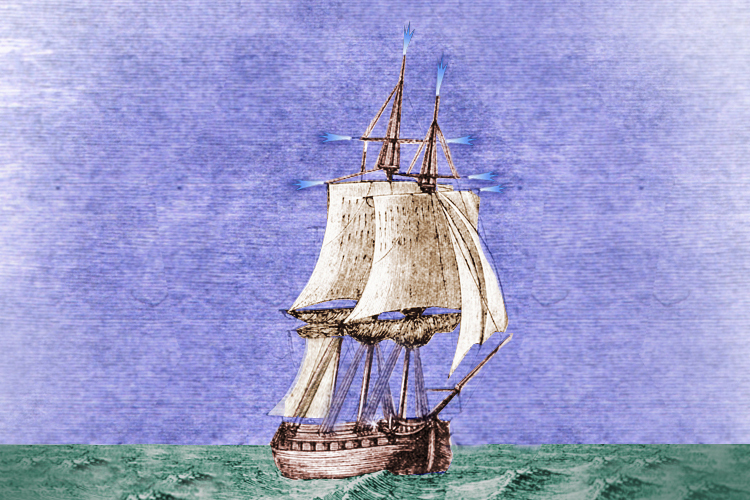Weather Hazards: St. Elmo's Fire and its Impact on Aviation
Hello Class,
Have you ever heard of St. Elmo's Fire? First, let's take a look into history a bit. Saint Elmo's Fire gains its name from Saint Erasmus of Formia the Patron Saint of Sailors. In the days of sailing wooden ships with tall masts, the ship's rigging and masts would glow blue when near thunderstorm activity and the sailors believed that it was fire from St. Elmo, and they believed it was a good omen or good fortune.
It is a rare weather phenomenon that "occurs when the atmosphere becomes charged and an electrical potential strong enough to cause a discharge (plasma) is created between an object and the air around it. This can happen to an aircraft flying through heavily charged skies (SKYbrary, (2024)."
This electrifying phenomenon happened to a Royal Airforce C-17 while flying on October 5, 2020. Although St. Elmo's Fire is not dangerous to aircraft, it is a sign that the aircraft is flying near thunderstorms.
St. Elmo's fire is a very interesting and cool weather phenomenon that occurs in the skies and also on the ground. This gives aviators a heads-up about the environment they could be soon potentially flying in. Although nowadays lighting does not have the same impact as it used to on aircraft in the early years of flying. All commercial aircraft are equipped with static wicks which are usually on the tail or wings of aircraft which conduct the lighting away from an aircraft after it has been struck. You can feel a bit safer when flying commercially, but this isn't the story for privately owned aircraft that aren't equipped with static wicks and must avoid flying near or through thunderstorms as it poses extreme risk.
St. Elmo's Fire has a history behind its origins, and that is why I chose this weather event to blog about. I find its utilization intriguing for how the sailors of old viewed and used it, and now aviators are basically viewing it the same way in terms of knowing when thunderstorms are near as they are sailing through the sky.
REFERENCES
Image with no Author, St. Elmo's Fire, (2014, April 29) [Image of ship]. Retrieved from URL.
https://www.sciencelearn.org.nz/images/2816-st-elmo-s-fire
SKYbrary. (2024). Weather. St. Elmo's Fire. [URL]. St Elmo's Fire | SKYbrary Aviation Safety
Image with no Author, C-17, (2020, October 5) [Image of C-17 Affected by St. Elmo's Fire]. Retrieved from URL. https://www.foxnews.com/science/weather-st-elmos-fire-raf-military-plane
Image with no Author, St. Elmo's Fire, (2020, October 5) [Image of St. Elmo's Fire]. Retrieved from URL. https://www.foxnews.com/science/weather-st-elmos-fire-raf-military-plane





Comments
Post a Comment